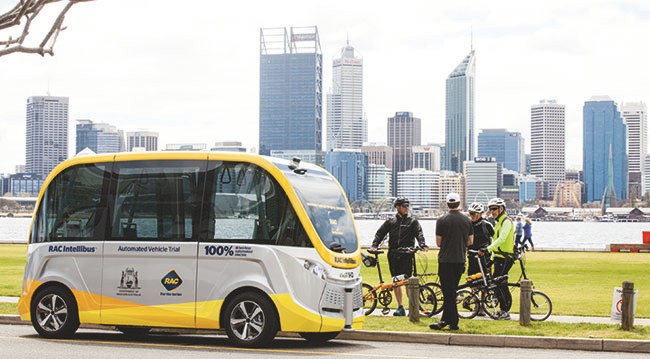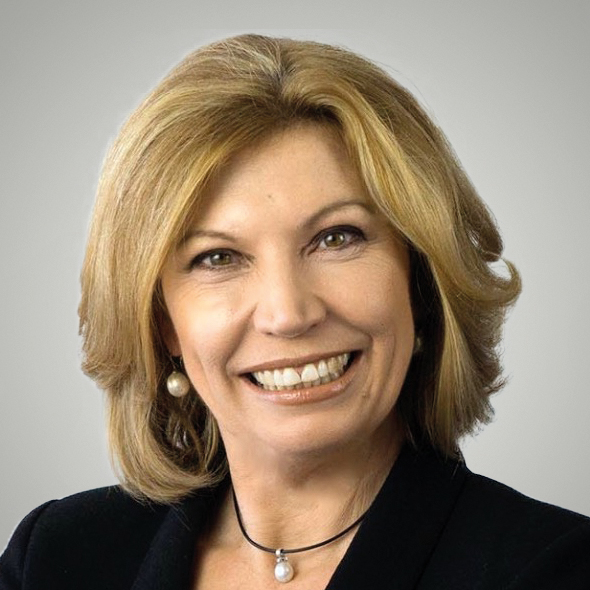RAC WA anticipated a risky future in 2007 but seized the chance to reinvent its business and brand. It offers a case study with lessons for directors and management.
What do you do when you’re a 114-year-old motoring membership club facing a future where half your current business is likely at risk?
That was a challenge faced in 2007 by the board and management of the Royal Automobile Club of Western Australia (RAC WA). Its 12-year journey responding to the strategic challenges posed by rapidly changing technology, demographics and consumer preferences has been written up as an MBA case study. It is a live example of how the innovation journey stretches board and management, and of the importance of driving innovation strategically through cultural change.
In 2007, the West Australian economy was still powering on the back of the resources boom. RAC WA had 400,000 members, a strong balance sheet and was a trusted brand. However, CEO Terry Agnew FAICD was increasingly concerned about how the organisation could remain relevant and have a long-term sustainable future given the changing social and technological context.
Agnew described it as a “crisis of aspiration”. As he put it, “Where does a strongly positioned organisation with a successful operating track record go from here?”
Agnew saw the organisation’s crisis as a strategic one. He and the executive team needed to navigate through a substantial technological and social shift. Autonomous vehicles, improved vehicle technology, a new regulatory framework, changing demographics and consumer preferences would disrupt its core businesses of decades and could see a significant reduction in insurance premiums. Given that half the group’s profit was comprised of motor insurance, there was a massive potential revenue gap. RAC WA needed to mobilise the entire organisation to anticipate and respond to a new and very different future.
Founded in 1905, the motoring club and mutual offers motoring services and advice, car and home insurance, travel services, finance, driver training and other benefits for its members. Disruption is nothing new to RAC WA, but the speed at which it is occurring in the current environment is. Around Australia, its state and territory counterparts have recognised similar challenges and have shared knowledge and services, as well as tapping into a global network, the International Automobile Federation (FIA).
Agnew, the executive team and board worked to counter the impact of disruption. RAC WA acquired a 49 per cent share in a retirement and home care business and started expanding into the tourism space. It also began an active conversation at board level on the importance of innovation.
In 2008, it held a summit aimed at shaping the future of RAC WA. It was decided that the commercial business model required restructuring — 150 roles were made redundant to better fit the organisation for where the business needed to go. Agnew felt the club needed to return to its roots of advocacy to understand how to become a genuinely strategic voice for its members. This recognised the external and internal role of innovation in building community acceptance.
In 2011, RAC WA launched its first publicly accessible electric vehicle charging station. This would, in 2015, become the “Electric Highway” of 12 charging stations across 320km between Perth and Augusta in the state’s south-west.
In 2014, RAC WA advocated strongly for innovation in the interests of driver safety, collaborating on research into the integration of autonomous vehicles to address driver inattention, a major cause of road accidents. The organisation worked with a French electronics company to make Perth one of the first cities in Australia to trial an autonomous, renewably powered shuttle bus. It was a collaborative effort with the support of the WA government, City of South Perth and manufacturer Navya. The Elephant in the Wheatbelt initiative was another RAC WA project, begun in 2014 to raise awareness of WA’s extremely high road fatality rate, particularly in the Wheatbelt region.
Management also worked on a series of investments with innovative startups and partnerships, including home solar panel and battery storage products for members. “An important part of that was how we could innovate and diversify to remain relevant, whether innovation or core business,” says Agnew.
It was clear more needed to be done. A 2013 review had identified a number of obstacles to innovation, including structure, a lack of process, a risk-averse, bureaucratic culture that feared failure, and decision-making that impeded innovation.
Agnew moved Erica Haddon, head of people and shared services, into the new role of executive general manager people, change and innovation. Her job was to champion the RAC WA cause by building innovation capability through a cultural change program, and explore breakthrough opportunities to help find the businesses of the future and define RAC WA’s future strategic positioning.
In early 2015, after briefing the board on the innovation approach and gaining its view on the speed and intensity of execution, RAC WA formalised its Innovation Strategy. The purpose was to embed an organisation-wide culture of innovation. This would hopefully then contribute to a member growth target of one million in the near term, and deliver future revenue streams.
RAC WA then adopted the Inventium Innovation Framework to measure the organisation’s innovation maturity and progress. A budget was allocated for innovation and key performance indicators (KPI) were drawn up around capability building to track initiatives funded through the innovation budget. These included the proportion of employees engaging in innovation, agreeing the organisation was open to new ideas and assessing its level of innovation maturity. It also monitors breakthrough innovation through KPIs on the ideas gathered and new products launched through innovation. Recognising the need to bring external commercial edge to its innovation, in 2018 RAC WA appointed Derek Gerard as entrepreneur-in-residence, establishing a $3m venture fund and building up an investment portfolio of early stage companies.

Board thoughts
At an AICD forum in February, members of the RAC WA board and management candidly discussed their perspectives on the innovation journey. The messages are that driving innovation can be a push-me/pull-you exercise and that the board’s role changes over time. It also takes time for management and board to build knowledge and get to the right conversations. Boards can help management by being clear early on their risk appetite and objectives. Other important issues to consider include finding appropriate measures beyond traditional return on invested capital measures.
Management said it was vital to have clear connection to objectives and accountability. “If you don’t put an objective for people to either learn new skills or deliver new outcomes, it won’t happen.”
Given one of the organisation’s key strategic risks was becoming irrelevant to its members and addressing the disruption happening around it, there were many discussions whether board and management were moving fast enough. As one director put it, “too fast and maybe there are too many risks; too slow, you’re not keeping up.” Plus, there’s a need to be aware of the brand, reputation, health and safety risks that might emerge.
Another message from the executive was for boards to clearly signal their appetite for risk and allow a deeper conversation beyond the usual governance and risk frameworks. One important lesson was to move to set up an incubation framework earlier, invest and ring-fence the risk.
Haddon cited a 2017 Harvard Business Review article: “Governing innovation is not for the faint of heart. The journey takes time and determination. It takes the courage to act in the long-term interests of the organisation, even when markets are more short-sighted. It takes the determination to fight the natural human aversion to risk and the fortitude to engage in creative abrasion.”
Haddon added, “It has to be done with robust governance framework, making sure that the risks are within agreed boundaries and agreed with the board.”
Central to this, she argued, was the need for leadership development, strong communication and strong signals both within and beyond the organisation. v
“The sense of urgency agreed by the board and executive had to be conveyed to the wider RAC WA in a manner that created an imperative for action without causing panic,” the case study noted. “The message that disruption was imminent — and a large innovation capability gap existed — had to be clearly understood by all RAC WA employees and this message had to come from the top.”
The journey so far
RAC WA today provides a range of diverse services to more than one million members in the areas of motoring, insurance, finance, travel and tourism, retirement and home services. It advocates for members on issues such as road safety, mobility, accessibility and environmental sustainability. It has a strong social purpose in aspiring to make WA a more connected community.
Reflecting on the lessons of the organisation’s innovation journey at the AICD forum, Agnew says his three lessons were:
- Find a way to establish more dialogue between management and board — and within management, between senior leaders — around innovation.
- Launch the BetterLabs Venture Fund sooner to establish broader links to the external innovation community.
- Recruit more external innovation “coaches” earlier, with specific experience in various aspects of innovation.
Agnew says the time between management and the board could have been better used for more discussion around innovation.
“We’ve been 10 years on the journey on group strategy. Now, we have really good conversations and it’s a two-way dialogue.”
In March, Agnew stepped down as CEO after 20 years, replaced by former chief operating officer Rob Slocombe. Haddon has left the organisation and now works as an innovation consultant.
Latest news
Already a member?
Login to view this content


